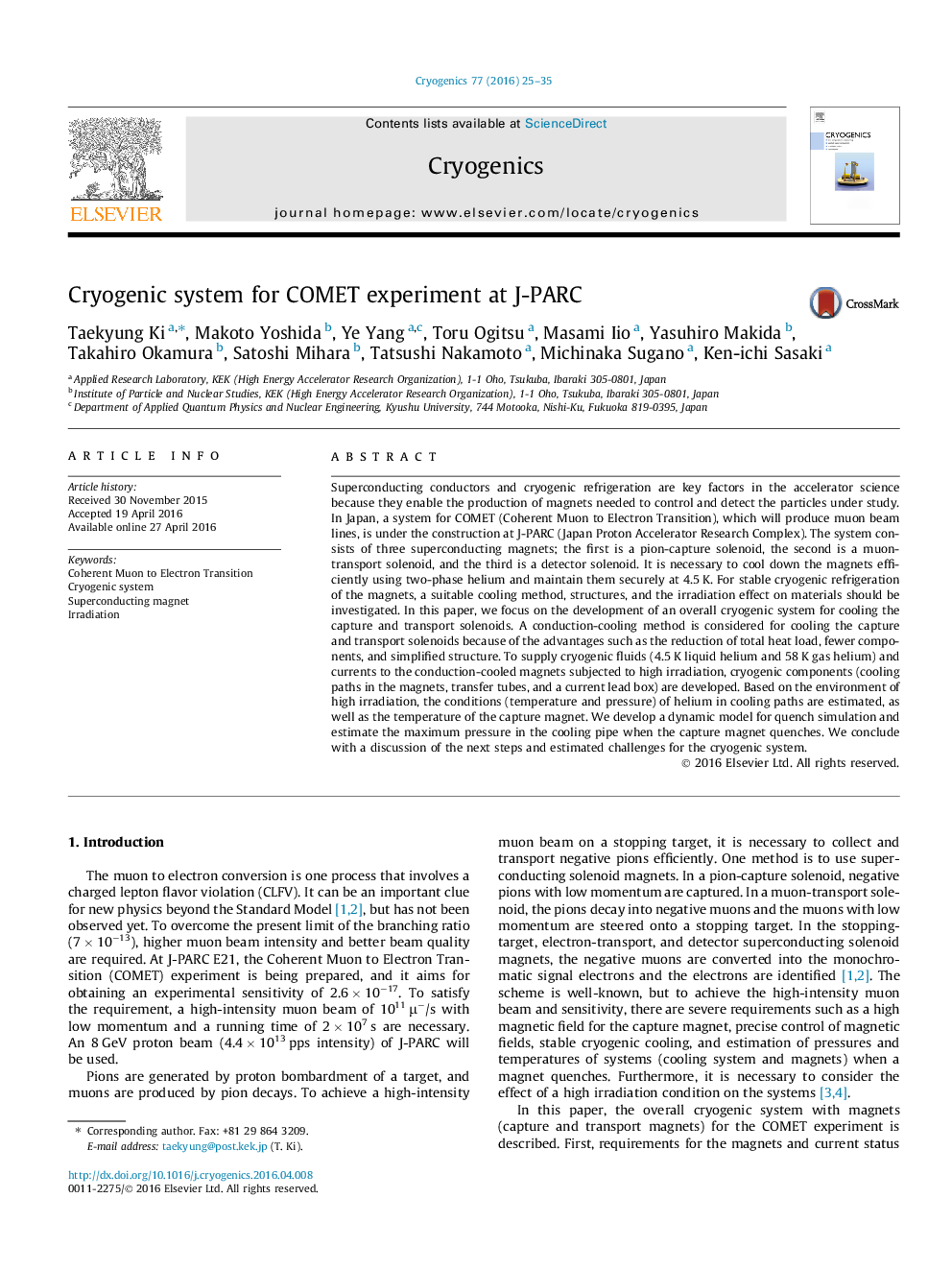| کد مقاله | کد نشریه | سال انتشار | مقاله انگلیسی | نسخه تمام متن |
|---|---|---|---|---|
| 1507229 | 1511036 | 2016 | 11 صفحه PDF | دانلود رایگان |

• The Coherent Muon to Electron Transition experiment is being prepared at J-PARC.
• Challenges for superconducting magnets are at high radiation areas are discussed.
• An overall cryogenic system with a conduction-cooling method is developed.
• Quench simulation is performed to check the maximum pressure in the cooling pipe.
Superconducting conductors and cryogenic refrigeration are key factors in the accelerator science because they enable the production of magnets needed to control and detect the particles under study. In Japan, a system for COMET (Coherent Muon to Electron Transition), which will produce muon beam lines, is under the construction at J-PARC (Japan Proton Accelerator Research Complex). The system consists of three superconducting magnets; the first is a pion-capture solenoid, the second is a muon-transport solenoid, and the third is a detector solenoid. It is necessary to cool down the magnets efficiently using two-phase helium and maintain them securely at 4.5 K. For stable cryogenic refrigeration of the magnets, a suitable cooling method, structures, and the irradiation effect on materials should be investigated. In this paper, we focus on the development of an overall cryogenic system for cooling the capture and transport solenoids. A conduction-cooling method is considered for cooling the capture and transport solenoids because of the advantages such as the reduction of total heat load, fewer components, and simplified structure. To supply cryogenic fluids (4.5 K liquid helium and 58 K gas helium) and currents to the conduction-cooled magnets subjected to high irradiation, cryogenic components (cooling paths in the magnets, transfer tubes, and a current lead box) are developed. Based on the environment of high irradiation, the conditions (temperature and pressure) of helium in cooling paths are estimated, as well as the temperature of the capture magnet. We develop a dynamic model for quench simulation and estimate the maximum pressure in the cooling pipe when the capture magnet quenches. We conclude with a discussion of the next steps and estimated challenges for the cryogenic system.
Journal: Cryogenics - Volume 77, July 2016, Pages 25–35